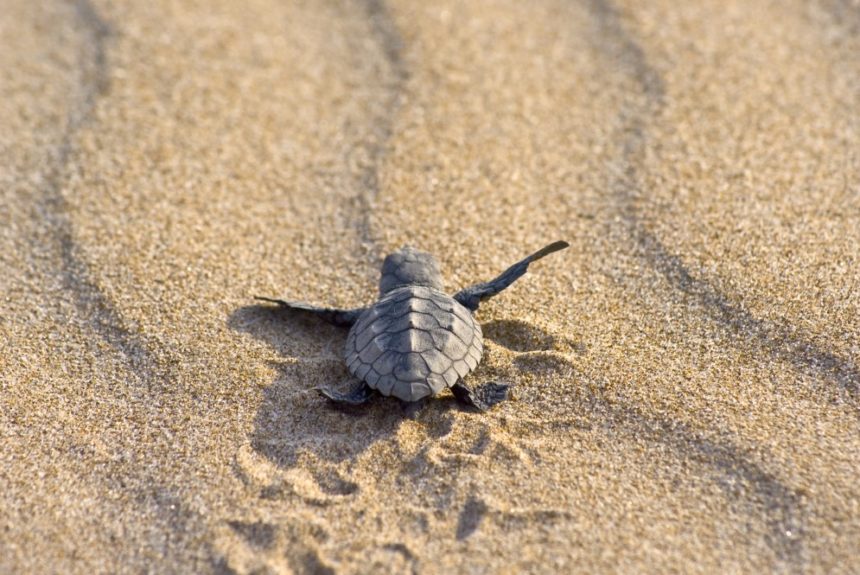Bahrain has a number of endangered species that benefit from conservation projects in the country. Discover the rare and threatened animals of Bahrain in our blog post.
Each country around the world has its own unique range of flora and fauna. Sadly, some species in each location have their survival threatened, either on a local or global level. The Kingdom of Bahrain is no exception.
This small nation in the Persian Gulf is made up of several small islands. The largest is heavily urbanised, but there is still an abundance of wildlife to be found, including a number of rare animals.
If you take a trip to the country with a Bahrain visa, you might be lucky enough to catch a glimpse of some of these creatures out in the wild.
Arabian oryx
This type of antelope is an incredible example of what conservation efforts can do.
The Arabian oryx was declared extinct in the wild in the early 1970s, but thanks to reintroduction and conservation projects, it is once again roaming the wilds of Bahrain and other Arabian countries.
It is the first animal in history to go from being functionally extinct to having its status reduced to “endangered” and then to “vulnerable” by the IUCN Red List. There are around 1,200 alive in the wild today.
The Arabian oryx is the national animal of Bahrain (as well as Jordan, Oman, Qatar, and the United Arab Emirates). According to some theories, they may have inspired the myth of the unicorn. When you lay eyes on these magnificent animals, you’ll see why.
Their beautiful white coat is almost luminous, with black and brown markings and they sport long horns, which do not grow back if lost in a fight.
To spot Arabian oryx in Bahrain, you’d have to take a trip to the Hawar Islands or get permission to enter the reserve area of Al Areen Wildlife Park.
Dugong
Closely related to manatees, these plump aquatic mammals peacefully graze on seagrass meadows close to the coast.
Dugongs are often associated with the seas around Australia and Southeast Asia, but these endangered “sea cows” can also be found in the waters around Bahrain. In fact, the Persian Gulf is home to the second-largest population of dugongs in the world! It is thought that there are between 5,800 and 7,300 dugongs in these waters.
However, oil spills, entanglement in fishing nets, and illegal poaching have caused a huge drop in dugong populations in the Gulf since 1950. This is one of the reasons why conservation in Bahrain is more important than ever.
Goitered gazelle
Another species that has been reintroduced in Bahrain, the goitered (or black-tailed) gazelle is now present on the Hawar Islands. This hardy species can be found in a number of other Asian countries, but is regarded as vulnerable by conservationists.
There are thought to be between 40,000 and 50,000 mature individuals worldwide, but the number living in Bahrain is much lower.
Adapted for life in the desert and steppe, the goitered gazelle changes the length and shade of its coat depending on the season. It features in prehistoric rock art, showing how long the species has been on Earth.
Ocellated eagle ray
One of the most mesmerising sights you’ll ever see is a ray flying through the ocean as if its fins were wings. The ocellated eagle ray is a species that can be found in the waters off the coast of Bahrain. Like many species, its survival is threatened by man.
Boasting a long stinger and feeding on a diet of molluscs, gastropods, bivalves, and octopuses, this ray is one of the animals in need of protection in Bahrain.
Arabian sand gazelle
Unique to the Middle East, this gazelle makes its home in the Arabian and Syrian Deserts and there are small populations in Bahrain. Classified as vulnerable, the total population in the wild is thought to be less than 3,000 worldwide. However, many more live in reserves, breeding programs, and other forms of captivity.
The Arabian sand gazelle is closely related to the goitered gazelle (see above). However, it was discovered in 2010 that the two are separate species.
Conservation in Bahrain
Bahrain is one of the leading Arabic countries when it comes to conservation. Although it is the smallest country in the Persian Gulf and is mainly built-up, it has 3 designated Protected Areas. These areas are protected by law to preserve the plant and animal species who live there and their ecosystems.
The 3 Protected Areas are:
- Mangroves at Ras Sanad (Tubli Bay)
- Hawar Islands
- Al-Areen Wildlife Park
The reserve area of the Al-Areen Wildlife Park is the only Protected Area on land. It spans 7 square kilometres and provides a home for around 50 species of animal. These include some non-native species, such as the giraffe.
However, you’ll need special permission if you want to visit — the area is dedicated to conservation. Usually, access is only granted to specialists, researchers, and veterinarians.


